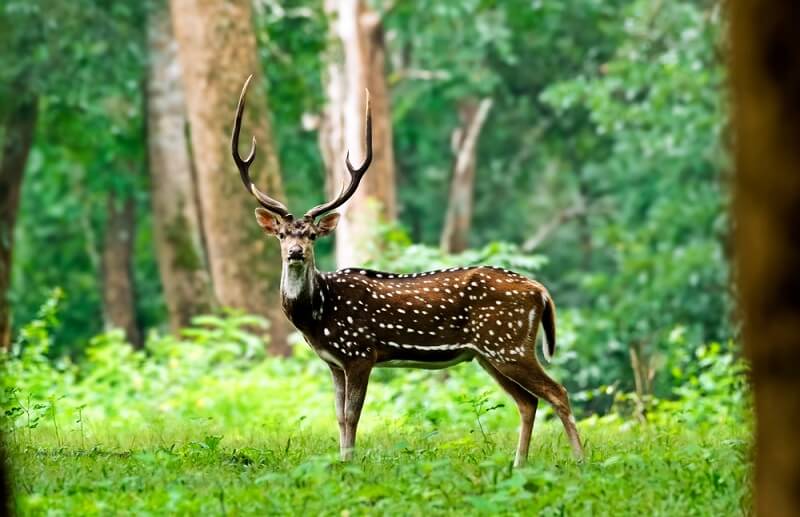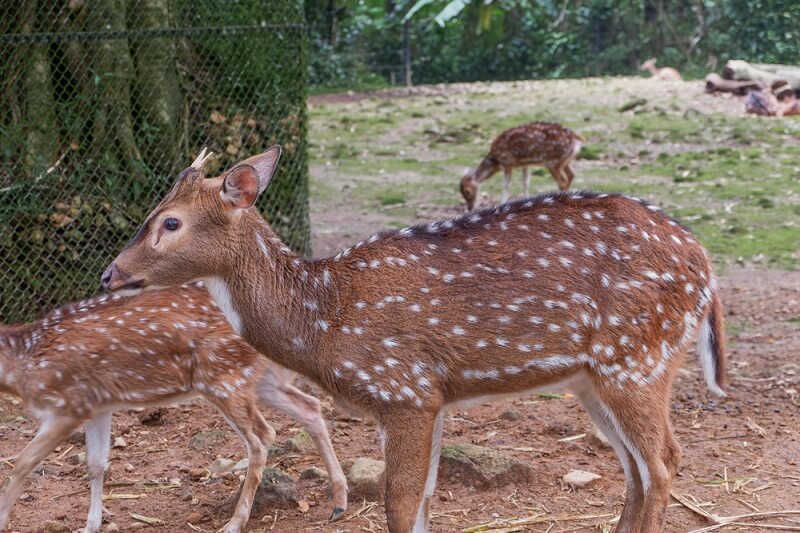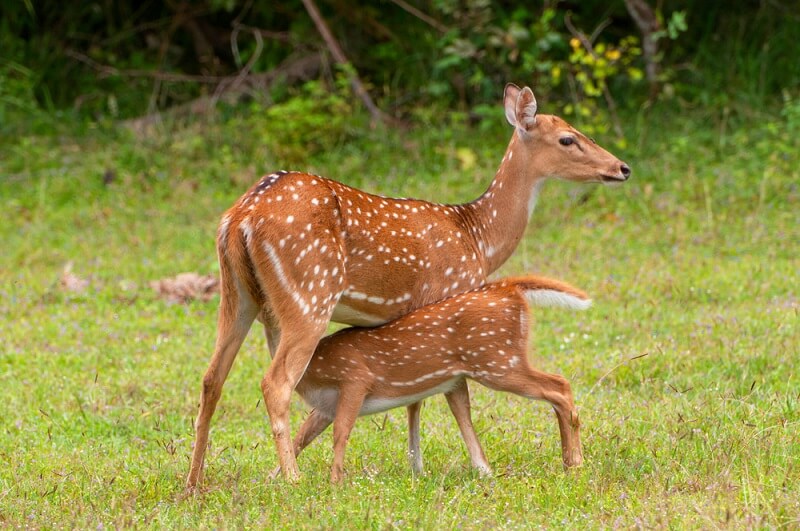
| Kingdom | Animalia |
| Phylum | Chordata |
| Class | Mammalia |
| Order | Artiodactyla |
| Family | Cervidae |
| Genus | Axis |
| Species | Axis axis |
| Niche | Herbivorous Herd Animal |
| Length | Around 5 feet (1.5 m) |
| Weight | 65-160 lbs (25-75 kg) |
| Lifespan | 5-10 years in the wild, up to 22 in captivity |
| Social Structure | Herding |
| Conservation Status | Least Concern |
| Preferred Habitat | Sparse forests, grassland, scrubland |
| Average Number of Offspring | 1 fawn, though twins sometimes possible |
| Main Prey Species | Grasses, vegetation |
| Predators | Tigers, lions, leopards, canines, crocodiles, wolves, humans |
The Basics
The axis deer is a species native to the Indian subcontinent that is easily identified by the white spots that bespeckle its coat. Though the axis deer is native to India (called a chital in this region), it has been introduced to places all over the world and is even considered an invasive species in many of these areas because it is a fierce competitor for local resources.
Many invasive populations were introduced as game animals for hunters. However, in their new environments, these deer have fewer predators, more resources, and can easily outcompete local species. In fact, on the Hawaiian islands, the axis deer population is growing at 20-30% a year! While hunters originally introduced these species, more drastic measures than hunting may be needed to cull these invasive populations.

Like other deer, the axis deer is an herbivorous herd animal with a highly generalized diet of grasses and vegetation. Males grow antlers on a yearly basis, which they use to compete with other males for mating access to females. Unlike other deer, chital usually form mating pairs instead of polygyny. Females can reproduce multiple times each year, and the offspring are likely to make it to adulthood – meaning populations can grow very quickly.
Interesting Insights from the Axis Deer!
While the axis deer may seem like a boring, spotted version of a normal deer, they are actually the perfect example of many different biological concepts.
Invasive Species
While most invasive species are insects, plants, and smaller animals, there is no reason that a larger mammal cannot be an invasive species. The axis deer is an invasive species in many areas around the globe and particularly in the United States. Populations of this species are a prized game species, due to their distinctly-colored coats. Unfortunately, this means that more than one wealthy hunter has exported the species outside of its home range.
Axis deer have been introduced into parts of Hawaii, Texas, California, Mississipi, Alabama, and many places outside of the United States. These populations, though their owners tried to keep them captive, escaped captivity and have established wild populations. Axis deer have a very high fecundity – meaning they can reproduce very quickly. This gives axis deer an advantage over many of the local species, which they easily outcompete. In parts of Hawaii, the axis deer is destroying agriculture and natural spaces because it has no natural predators.

Polygamy vs Monogamy
Unlike many deer species, this deer species is much more monogamous. Instead of a male trying to create a harem or defend a lek (breeding territory), male axis deer tend to pick one female and stick with her. This gives interesting advantages to the deer species. For example, it increases the diversity of the population by allowing more males to breed in every season. With more and younger males breeding, the genetic variability in the population is greatly increased over the practice of polygamy.
Polygamy – or mating with multiple mates – is practiced is most species of the Cervidae family. More specifically, most deer and elk species practice polygyny. Meaning “many females,” this form of reproduction typically takes place when the largest, most aggressive males control mating access to many different females. This strategy also has its benefits – namely that the “most fit” male genetics are the only ones that get passed on. But, it also has its drawbacks. Many males never get the chance to mate, and most must wait until they are very old to begin mating. This limits the genetic variability within the population and can lead to peculiar sexually selected traits.

